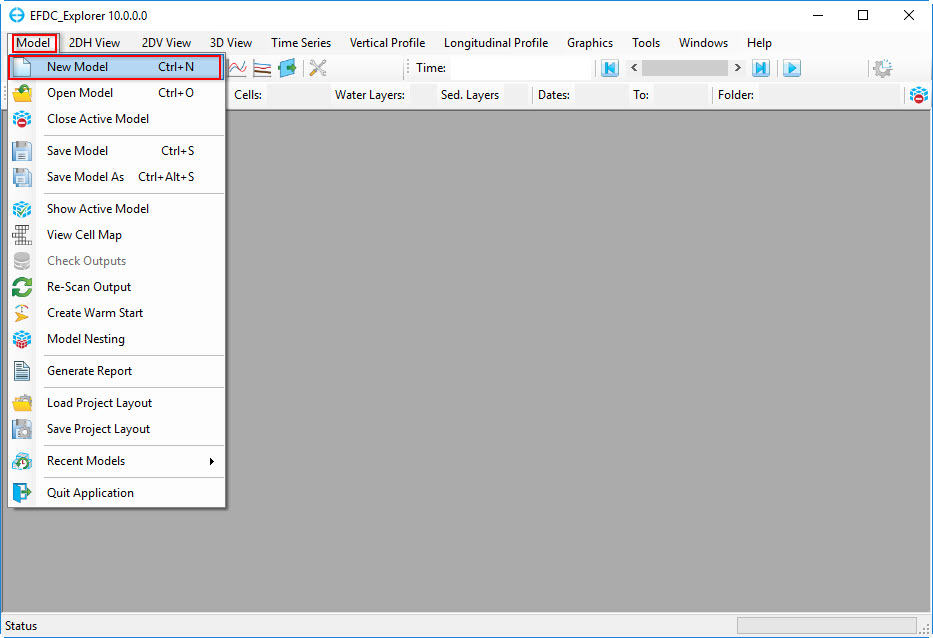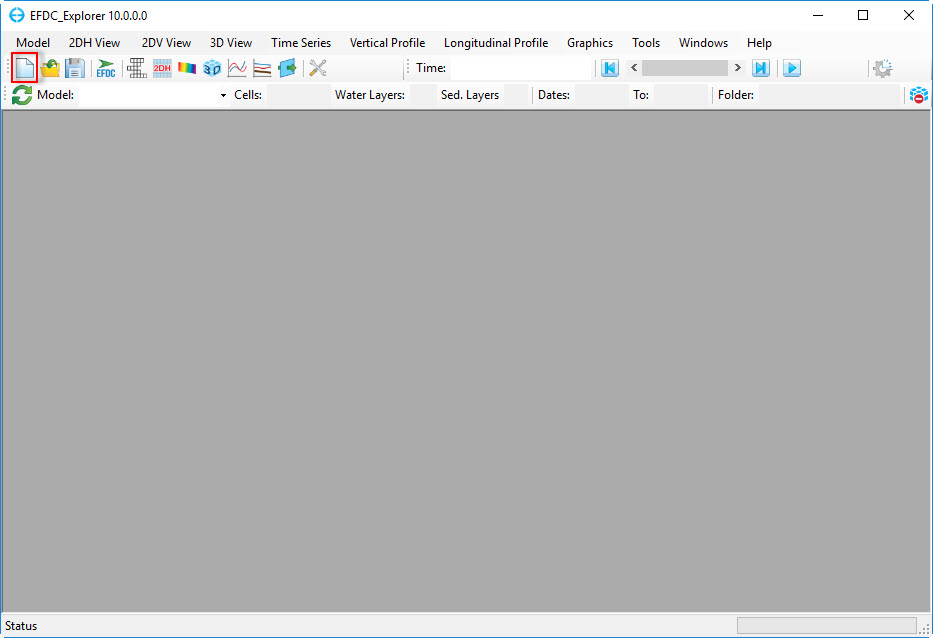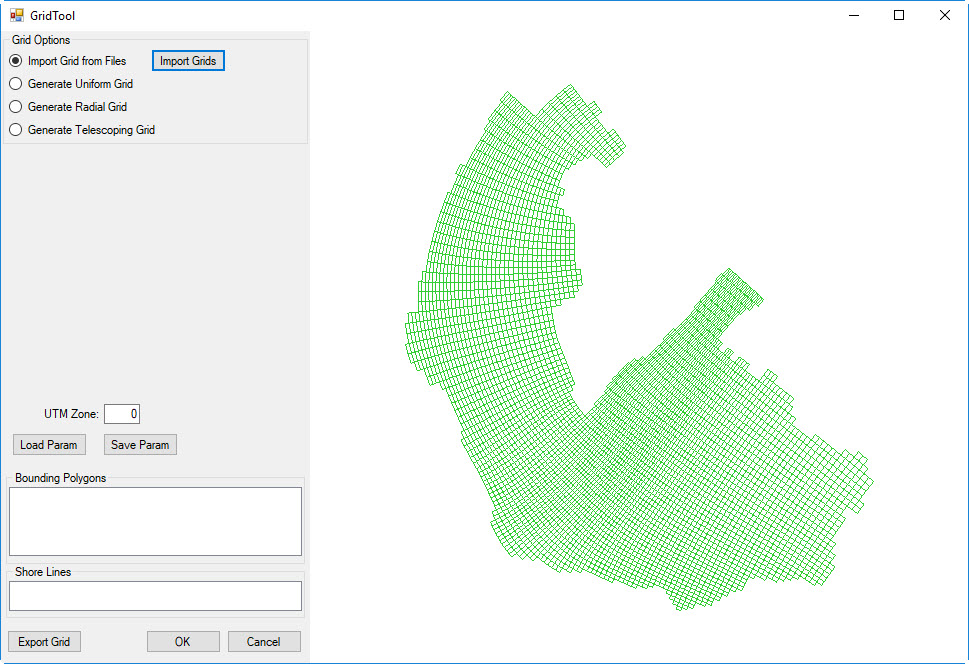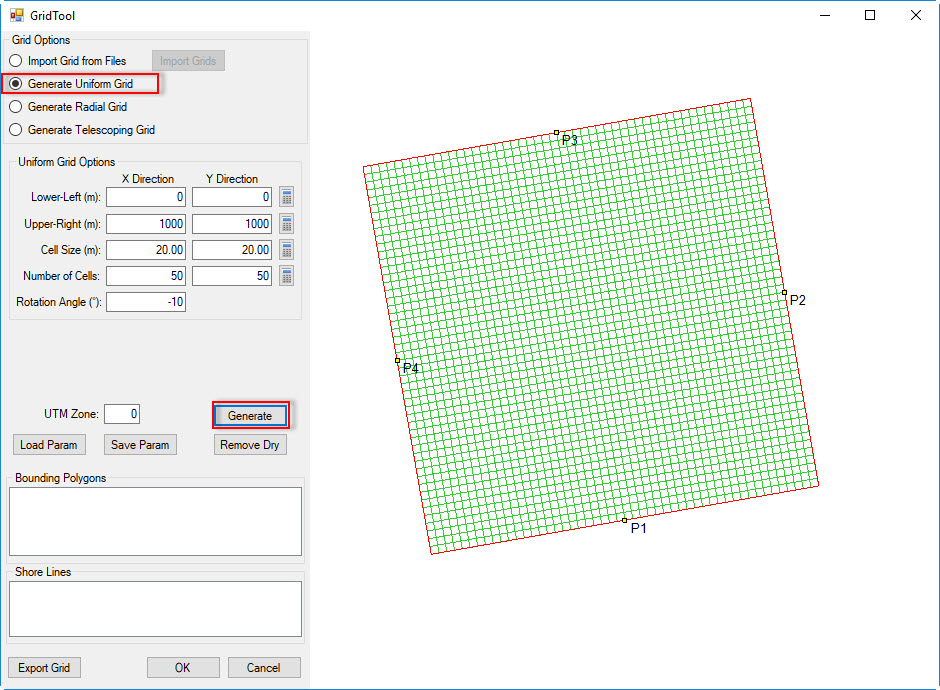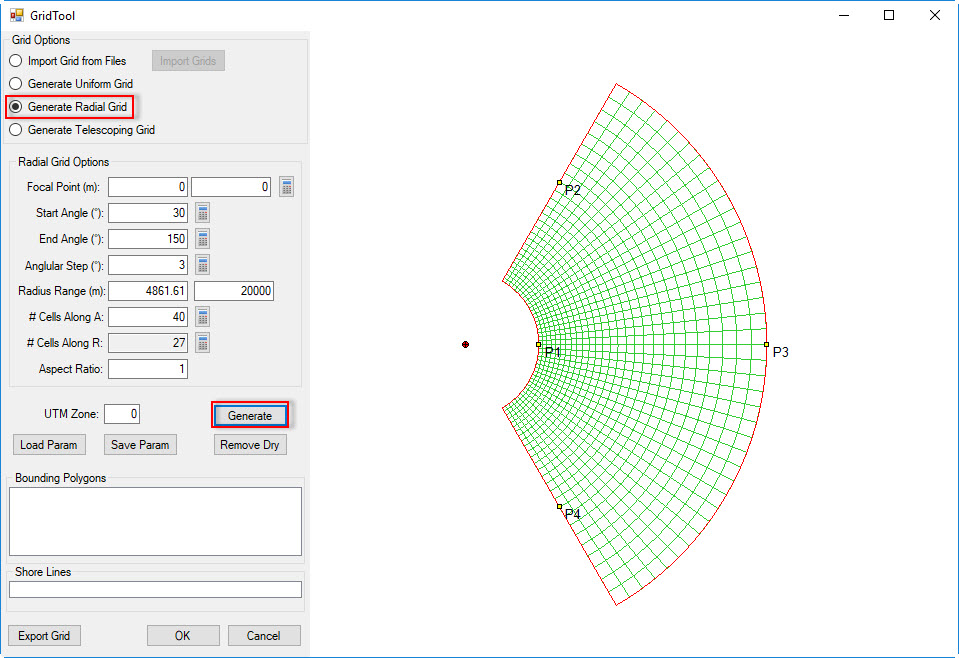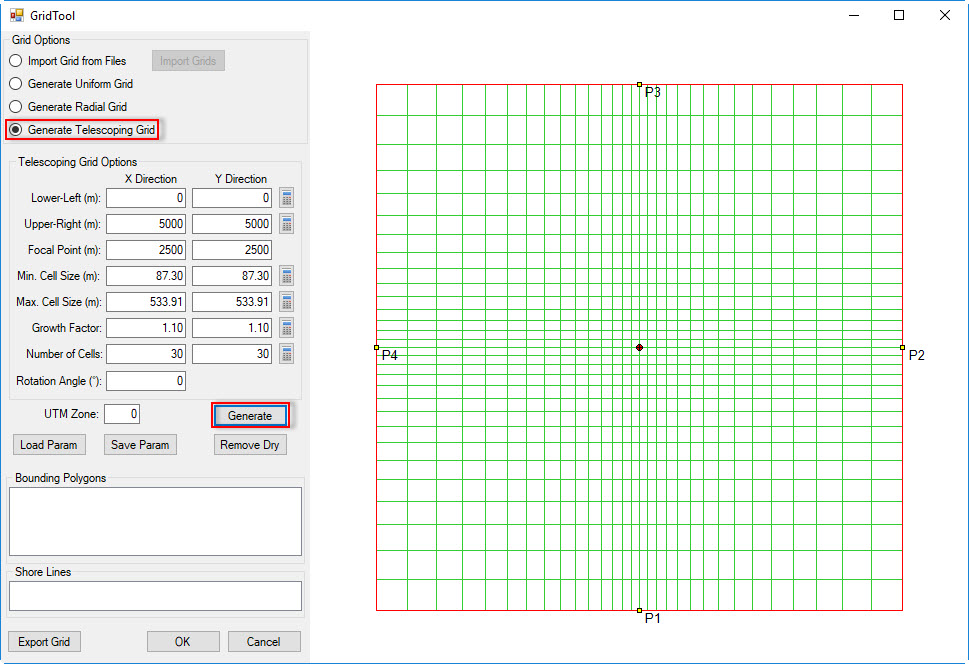After opening EE10, the user has a number of different ways to create a new model, three approached are:
- Click the Model button on the main menu toolbar, then select New Model (see Figure 1).
- Click the New Model button directly on the main menu toolbar (see Figure 2).
- From the keyboard, press Ctrl+N.
Figure 1. Create a new model (1).
Figure 2. Create a new model (2).
After one of these three ways is used create a new model, the Grid Tool form appears. From this form, the user has four options for assigning grids:
- Import Grids from Files: this option allows user to import an existing grid file; the grid can be one of a number of formats including CVLGrid or RGFGrid. If the user has multiple sub-grids for a waterbody then the Multiple grid files check box may selected. Browse to the grid file and click OK button to finish. (see Figure 3 and Figure 4).
- Generate Uniform Grid: this option allows the user to generate a Cartesian grid. The user can define grid cell size and the number of cells (see Figure 5).
- Generate Radial Grid: this option allows the user to generate radial grid ( see Figure 6).
- Generate Telescoping Grid: this option allows the user to generate a telescoping grid ( see Figure 7).
Details of how to use these options are provided in the Model Grid section.
Figure 3. Import from existing grids (1).
Figure 4. Import from existing grids (2).
Figure 5. Generate Uniform Grid.
Figure 6. Generate Radial Grid.
Figure 7. Generate Telescoping Grid.
